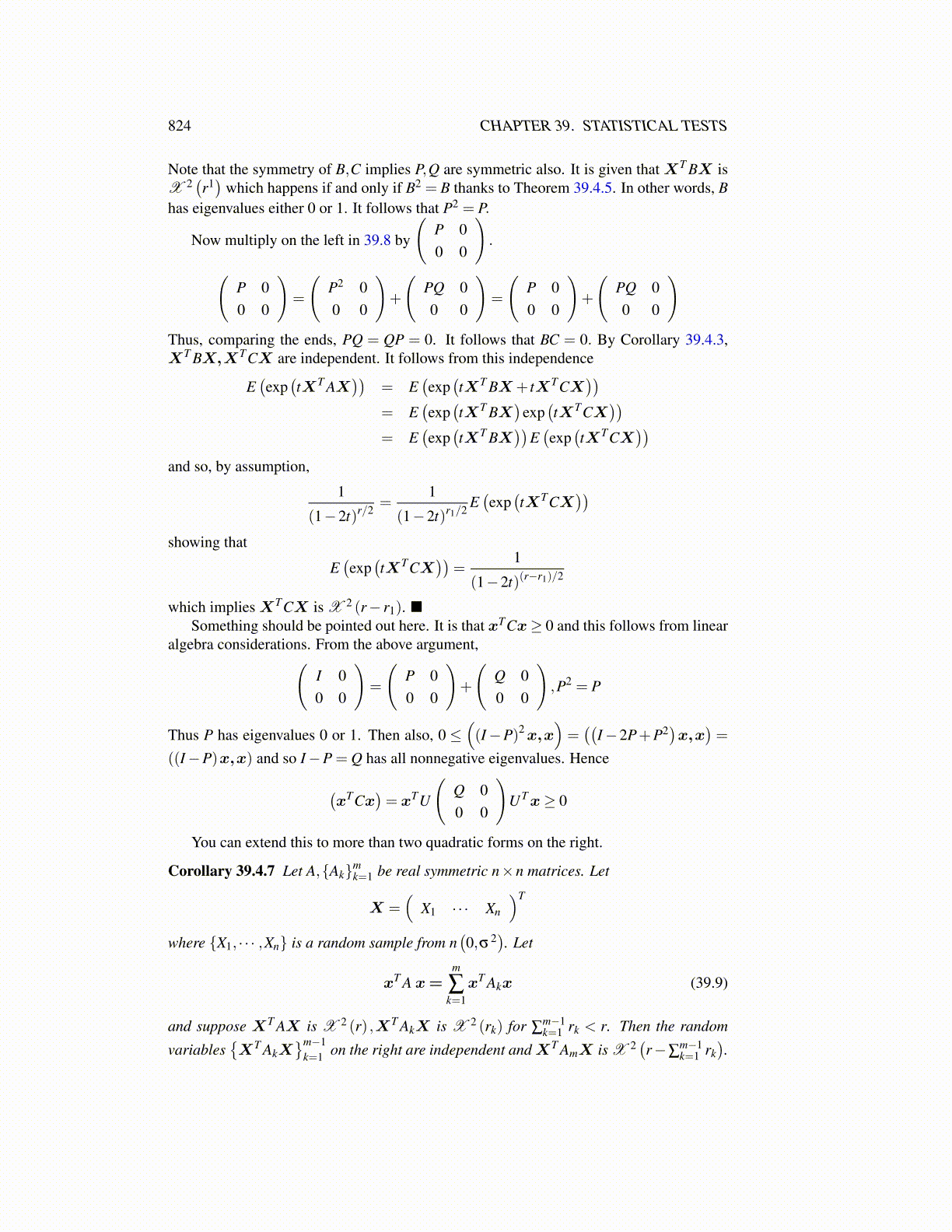
824 CHAPTER 39. STATISTICAL TESTS
Note that the symmetry of B,C implies P,Q are symmetric also. It is given that XT BX isX 2
(r1)
which happens if and only if B2 = B thanks to Theorem 39.4.5. In other words, Bhas eigenvalues either 0 or 1. It follows that P2 = P.
Now multiply on the left in 39.8 by
(P 00 0
).
(P 00 0
)=
(P2 00 0
)+
(PQ 00 0
)=
(P 00 0
)+
(PQ 00 0
)Thus, comparing the ends, PQ = QP = 0. It follows that BC = 0. By Corollary 39.4.3,XT BX,XTCX are independent. It follows from this independence
E(exp(tXT AX
))= E
(exp(tXT BX+ tXTCX
))= E
(exp(tXT BX
)exp(tXTCX
))= E
(exp(tXT BX
))E(exp(tXTCX
))and so, by assumption,
1
(1−2t)r/2 =1
(1−2t)r1/2 E(exp(tXTCX
))showing that
E(exp(tXTCX
))=
1
(1−2t)(r−r1)/2
which implies XTCX is X 2 (r− r1). ■Something should be pointed out here. It is that xTCx≥ 0 and this follows from linear
algebra considerations. From the above argument,(I 00 0
)=
(P 00 0
)+
(Q 00 0
),P2 = P
Thus P has eigenvalues 0 or 1. Then also, 0 ≤((I−P)2x,x
)=((
I−2P+P2)x,x
)=
((I−P)x,x) and so I−P = Q has all nonnegative eigenvalues. Hence
(xTCx
)= xTU
(Q 00 0
)UTx≥ 0
You can extend this to more than two quadratic forms on the right.
Corollary 39.4.7 Let A,{Ak}mk=1 be real symmetric n×n matrices. Let
X =(
X1 · · · Xn
)T
where {X1, · · · ,Xn} is a random sample from n(0,σ2
). Let
xT A x=m
∑k=1
xT Akx (39.9)
and suppose XT AX is X 2 (r) ,XT AkX is X 2 (rk) for ∑m−1k=1 rk < r. Then the random
variables{XT AkX
}m−1k=1 on the right are independent and XT AmX is X 2
(r−∑
m−1k=1 rk
).